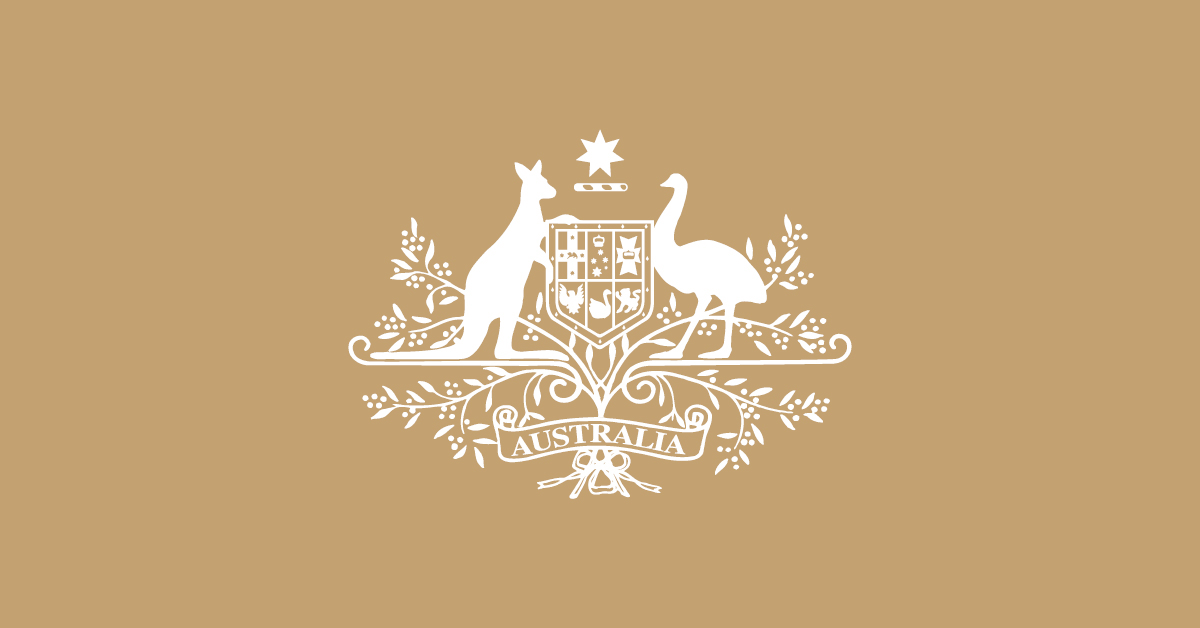
Jack Ferguson Memorial Lecture 2022
I start by acknowledging the traditional owners of the land on which we meet today, the Dharug people, and I pay my respects to their elders – past, present and emerging.
And commit the government, that I am so proud to be a part of, to the implementation of the Uluru Statement from the Heart – in full.
I also start by thanking and acknowledging Laurie Ferguson, Jack’s son who is here today.
The State Member for Auburn, Lynda Voltz.
Anthony D’Adam who is a member of the NSW Legislative Council.
Donna Davis, the Lord Mayor of Parramatta.
Lisa Lake, the Mayor of Cumberland who joins us online.
And Counsellor Patricia Prociv from the Parramatta Council.
It is an honour to be asked to deliver this year’s Jack Ferguson Memorial Lecture.
When I think of Jack Ferguson I think of the best of us.
Someone who was Labor to his bootstraps.
A man who worked with his hands and led with his heart.
I think of the words we might hope others use of us when our time is up.
Good. Honest. Loyal.
I think about how all of those qualities combined to help create one of the most successful political partnerships in Australian history.
I think of Neville Wran’s words about Jack: “I love Jack more than life itself”.
I think of the political dynasty he forged.
I think of Mary.
And I think of Guildford.
It’s hard to talk about one without the other.
He lived there most of his life.
The last 60 at two houses next door to each other.
The first his mother’s. And the second, the one he built, brick by brick for him and Mary.
209 Guildford Road.
The local branch used to meet in his Mum and Dad’s garage.
He represented the people of Guildford on Council and in Parliament for 30 years.
Walk around Guildford and you will find his name everywhere.
Including Guildford Library. It’s there because of Jack.
Jack was a bricklayer. But he was also a bookworm.
Rodney Cavalier tells how as a kid Jack would read adventure yarns and cowboy stories at the kitchen table by the mellow light of an oil lamp.
There was no money to buy books. He got them from lending libraries. Book exchanges and the Guildford School of Arts.
When World War 2 broke out Jack signed up and was shipped off to New Guinea. But he didn’t stop reading. The Army delivered wooden boxes full of Penguin books to the troops on the front line and Jack loved them.
He might not have had a university degree, but he was more widely read than most who did.
He understood the power of education.
Not just how it transforms the lives of individuals.
But what it does for their families.
How it ricochets through generations.
And what it does for communities.
In particular places like Guildford.
And that’s what I want to talk to you about today.
We are a very different country today to the one that existed when I was born 50 years ago, in so many ways.
Back then, before Gough came to power, the last awful remnants of the White Australia Policy were still in place.
Today we are one of the most multicultural countries in the world.
Back then, only 18 percent of young people finished high school.
Only 2 percent had been to university.
Today, 90 percent of young Australians finish year 12 or its equivalent (a Cert 3) at TAFE.
More than 44 percent of young Australians in their 20s have a uni degree.
We are a different country.
And Guildford is different too, but not when it comes to education.
I am the first in my family to finish high school. I am the first in the family to finish year 10.
My mum and dad, a bit like Jack, grew up in that era where working class kids from western Sydney left school as soon as they could, and got an apprenticeship or went to secretarial school.
And that’s what they did.
I got the chance they didn’t. Thanks in part to the changes Labor Governments have made.
Gough. Bob and Paul. Neville and Jack.
But those changes haven’t reached everyone or every corner of the country. There are still people and places that miss out.
And one of those is Guildford.
I said a moment ago that 90 percent of young Australians finish year 12 or its equivalent today.
But not in Guildford. In Guildford it’s 69 percent.
And I said more than 44 percent of Australians in their 20s have a university degree.
But again, not in Guildford. In Guildford it’s 31 percent.
And it’s not just Guildford.
Here in Parramatta we have seen an explosion in university qualifications.
More people now have uni degrees here in Parramatta than in parts of the North Shore. And it’s well over the national average.
But you don’t have to drive far to find a different story.
In Mount Druitt it’s 32 percent. Fairfield it’s 25 percent. In Liverpool it’s 34 percent. In Cabramatta, where I grew up, it’s 30 percent.
In Logan, in Jim Chalmers’ electorate up in Queensland, it’s the same story. There it’s 19 percent. It’s why he gets it.
The fact is kids from poorer families are still less likely to go to pre-school than kids from wealthier families. They are less likely to finish high school, and they are less likely to go to university.
I talked before about how much Jack loved to read.
He would be heartened to know this – in the last 14 years the reading skills of primary school children have improved dramatically.
NAPLAN data proves it.
The reading skills of the average primary school student today are about a year ahead of the average primary school student 14 years ago.
I think Jack would like that.
But he wouldn’t like this.
The gap in the reading skills of children from wealthy families and children from poor families is getting bigger.
14 years ago the gap in the reading skills of 8 year olds from wealthy families and 8 year olds from poor families was a bit over a year.
Now it’s over two.
And guess what? That gap grows with every year of school.
By the time they get to year 9 that gap is over five years.
I have said a number of times in the short time I have had this job, I don’t want us to be a country where your chances in life depend on who your parents are, where you live, or the colour of your skin.
But that’s where we are today.
So what do we do about it?
A few weeks ago when I was getting ready to announce 20,000 extra university places, a Vice Chancellor said to me, “Minister, I know you’re concerned about people who are under-represented at university. Why don’t you allocate 5,000 of the 20,000 places to them”.
I thought about it, and I thought why don’t I allocate all 20,000 to them?
And so that’s what I did.
To students from poor families. Students from regional Australia. Indigenous Australians. Australians with a disability. And Australians who are the first in their family to ever set foot in a university.
That’s just the start.
Soon I will be kicking off the first review of our higher education system in 15 years.
The first since Julia Gillard commissioned the Bradley Review.
That report set a target that by 2020, 20 percent of students at our universities should come from low socio-economic backgrounds.
2020 has come and gone. And that target has still hasn’t been met. The dial has barely moved.
One of the things I am going to ask the team that will conduct this review is, how do we move that dial?
Not all of the change I want to see can happen at the gates of our universities.
It’s got to start long before that.
That means zeroing in on this in the next National Schools Reform Agreement.
And those negotiations kick off soon.
One of the things we will focus on is how to better target students who are falling behind at school.
How do we help students from places like Guildford from falling behind? How do we help more to finish school?
But we have got to go even further back than that. Back to before children even start school.
We know how important the first five years of life are.
Everything you see, hear, eat. Every smile, every laugh, every friend, every book, every lesson, shapes the person you become.
We also know now that childcare isn’t baby sitting. It’s not even childcare. It’s early education.
Every day there gets you ready for school. So making it affordable and available to everyone matters.
Last year 55 per cent of four and five year olds were assessed as developmentally ready to start school.
But only 34 percent of Indigenous children met that mark.
And that percentage is going backwards. Four years ago it was 35 percent.
The gap isn’t closing, it’s getting bigger.
That’s why one of my first acts as Minister for Education has been to extend the Child Care Subsidy for all Indigenous families.
A Bill I introduced to Parliament a few weeks ago provides a base level of 36 subsidised hours a fortnight of early education for all Indigenous children, whether their parents meet the activity test or not.
That’s the same Bill that will cut the cost of early childhood education for more than one million Australian families, and make it easier for more parents, more women in particular, to return to paid work or work more hours.
Next year is the next step.
We will ask the Productivity Commission to conduct a comprehensive review that will chart a course for universal and affordable early education and care.
As the Prime Minister said in the Parliament a few weeks ago:
“Just as universal Medicare guarantees every Australian the right to quality and affordable healthcare, just as universal superannuation ensures every Australian can know dignity and security in their retirement, we want universal child care to guarantee every Australian family the support they need and every Australian child the opportunity that they deserve.”
I hope in what I have talked about today you can see a common thread.
In what we do in early education right through to our universities.
It’s what has always driven us.
What Whitlam called equality of opportunity.
What Albo means when he says no one held back and no one behind.
What is really just a fair go.
Making sure that every Australian gets a fair crack.
And getting our education system right is the key to that.
In particular in Guildford and places like it.
I am sure Jack would agree.
It’s twenty years this year since he left us.
But look hard enough and you can still see him.
Not just in his children. Or their children.
Not just in Guildford.
Next time you are in the city if you are up near the State Parliament, keep walking until you get to the State Library.
You know that bit where you can look in those big windows and see students studying. People, young and old, reading.
That used to be a tennis court.
Not just any tennis court. A tennis court for politicians.
Jack Ferguson, the boy who left school at 13, the bricklayer who loved books, tore down that tennis court, and turned it into a library.
For those of us who believe in the power of education and the power within ourselves to do good, it’s a reminder that we only have to look to Jack Ferguson for inspiration.
Thank you so much for the honour of delivering this year’s Jack Ferguson Memorial Lecture.


